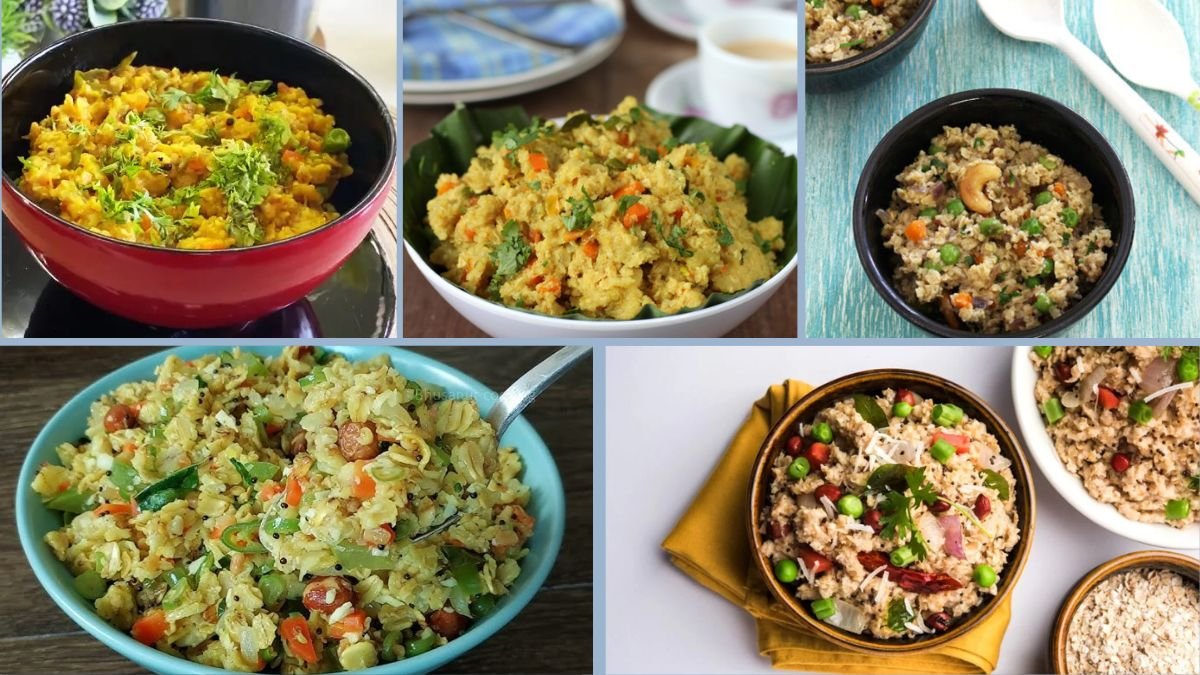Oats upma is a nutritious, fiber-rich breakfast option that combines oats with vegetables and Indian spices. Traditionally, upma uses oil for tempering, but it is possible to prepare a flavorful, low-fat version suitable for health-conscious individuals. This paper presents a 6-step method for cooking vegetable oats upma without oil, focusing on maximizing taste, texture, and nutritional value using only vegetarian ingredients.
Introduction
Breakfast is considered the most important meal of the day, and a balanced start contributes to sustained energy levels and metabolic efficiency. Traditional Indian breakfasts like semolina upma are popular, but often high in fats due to added oil or ghee. Oats, a whole-grain superfood, are high in soluble fiber, help control blood sugar, and improve heart health. Incorporating oats into upma, along with vegetables, provides protein, micronutrients, and antioxidants.
Cooking upma without oil reduces calorie density while retaining flavor when alternative cooking methods and smart seasoning are employed. This 6-step approach emphasizes practical, simple techniques to prepare soft, flavorful, and wholesome vegetable oats upma suitable for everyday consumption.
Step 1: Selecting the Right Ingredients
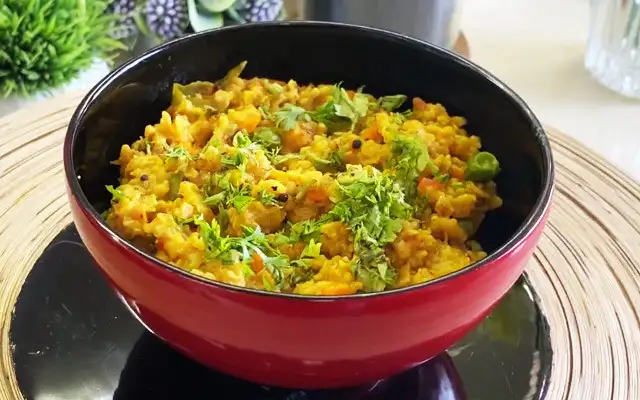
1a. Oats
- Rolled or quick-cooking oats are preferred. Rolled oats provide a slightly chewier texture, while quick oats cook faster and absorb flavors readily. Avoid instant flavored oats as they may contain additives or excess salt.
1b. Vegetables
Vegetables contribute flavor, texture, and nutrition. Ideal choices include:
- Carrots (julienned or finely chopped)
- Green beans (small pieces)
- Bell peppers (colorful strips)
- Peas or corn kernels
1c. Aromatics and Spices
- Fresh ginger and green chilies for pungency
- Curry leaves for aroma
- Mustard seeds or dry roasted spices for tempering without oil
- Salt, turmeric, and black pepper for seasoning
1d. Liquids
- Water or vegetable broth for cooking oats
- Lemon juice at the end to enhance flavor
Tip: Pre-chop vegetables to ensure even cooking. For a travel-friendly version, slightly undercook vegetables so they retain crispness.
Step 2: Preparing Oats
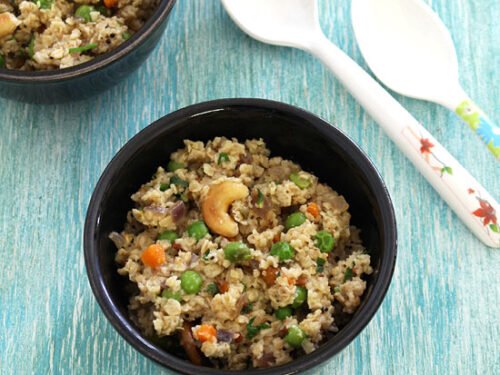
- Roasting without oil: Dry roast oats in a non-stick pan over low heat for 3–4 minutes until aromatic. This enhances flavor and prevents a mushy texture.
- Keep oats aside after roasting. Roasting also slightly reduces moisture content, helping the upma remain soft but not soggy.
Scientific Note: Dry roasting gelatinizes starch lightly, which allows oats to absorb water evenly without clumping.
Step 3: Cooking the Vegetables
- Heat a non-stick pan or deep vessel.
- Add a few teaspoons of water and sauté curry leaves, mustard seeds, ginger, and chilies. Gradually add small amounts of water to prevent sticking.
- Add harder vegetables like carrots and beans first; softer vegetables like peas and bell peppers later.
- Cover and steam vegetables for 5–7 minutes until tender but still vibrant in color.
Tip: Steaming with minimal water retains nutrients and natural flavors.
Step 4: Cooking Oats Upma
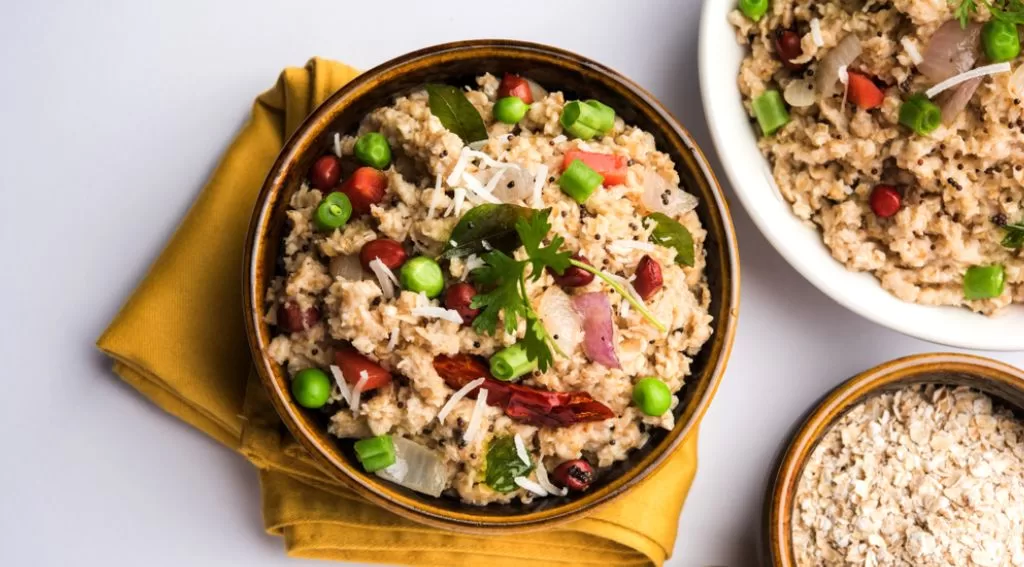
- Add the dry roasted oats to the steamed vegetables.
- Pour in water or vegetable broth gradually—ratio of 1 cup oats to 2–2.5 cups water is ideal for soft upma.
- Stir continuously to avoid lumps.
- Cover and cook for 5–7 minutes until oats are fully cooked and fluffy.
Note: Avoid overcooking as oats may turn mushy. Stir occasionally to allow even absorption and uniform texture.
Step 5: Flavor Enhancement Without Oil
- Use dry roasted spices (cumin, coriander, black pepper) added towards the end to release aroma.
- Squeeze fresh lemon juice before serving to balance flavors.
- Garnish with fresh coriander leaves and finely chopped green chilies.
Optional: Toasted sesame seeds or lightly roasted peanuts can add crunch without oil.
Scientific Rationale: Adding aromatic spices and citrus at the end preserves volatile compounds and enhances sensory perception without oil.
Step 6: Serving and Storage
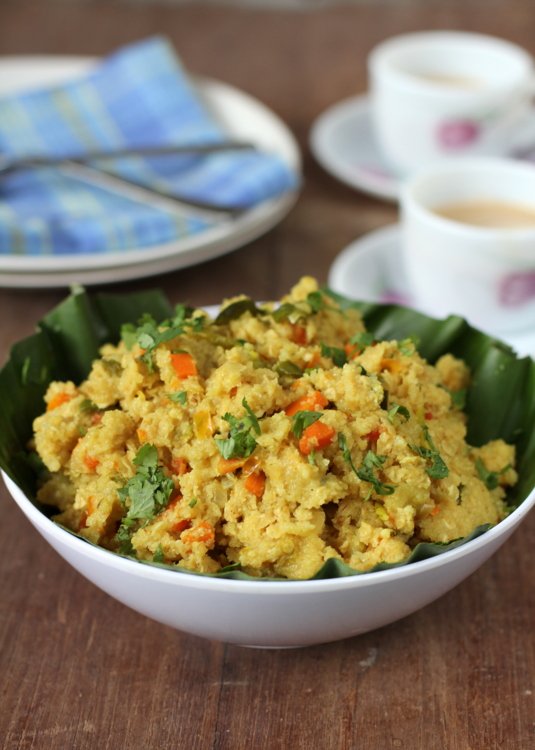
- Serve hot for breakfast with optional accompaniments like chutney, yogurt, or fresh fruit.
- For travel or meal prep, cool the upma to room temperature, then store in airtight containers. Refrigerated upma remains fresh for up to 24 hours.
- Reheat gently with a few tablespoons of water to restore softness without adding oil.
Tip: Avoid microwaving at high power, which can dry out oats; gentle stovetop steaming is preferable.
Nutritional Benefits
- Fiber: Oats and vegetables provide soluble and insoluble fiber, improving digestion and satiety.
- Protein: Oats contain plant-based protein, complemented by peas or beans in the vegetable mix.
- Vitamins and Minerals: Carrots (beta-carotene), bell peppers (vitamin C), peas (iron), and leafy garnishes provide micronutrients.
- Low Fat: Eliminating oil reduces saturated fat intake while retaining flavor through spices, aromatics, and roasting techniques.
Common Mistakes and How to Avoid Them
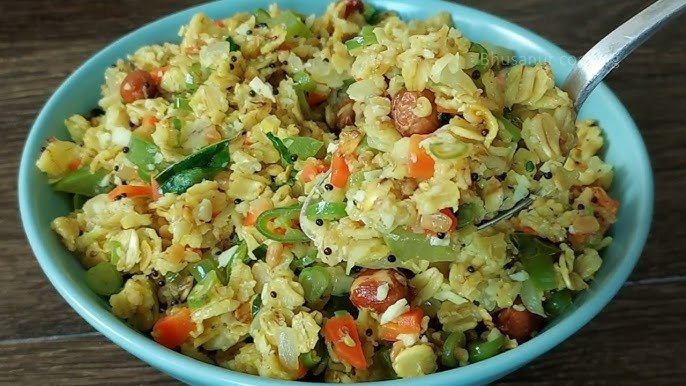
| Mistake | Effect | Correction |
|---|---|---|
| Overcooking oats | Mushy texture | Roast lightly and cook until just soft |
| Adding too much water | Soggy upma | Use measured water; adjust gradually |
| Neglecting vegetables | Bland flavor | Steam vegetables first for color and crunch |
| Skipping flavoring | Flat taste | Use spices, lemon juice, and fresh herbs for aromatic enhancement |
| Storing hot upma | Moisture condensation | Cool before storing to maintain texture |
Conclusion
Vegetable oats upma can be cooked without oil while retaining flavor, nutrition, and texture. By following these six steps—selecting ingredients, roasting oats, steaming vegetables, cooking evenly, enhancing flavor, and proper serving/storage—one achieves a wholesome breakfast suitable for daily consumption or travel.
This method reduces caloric intake, promotes heart health, and ensures a balanced intake of fiber, protein, and vitamins—all while preserving the traditional essence of Indian upma. Such an approach demonstrates that health-conscious adaptations of classic recipes can be both practical and delicious without reliance on oil or non-vegetarian additives.
